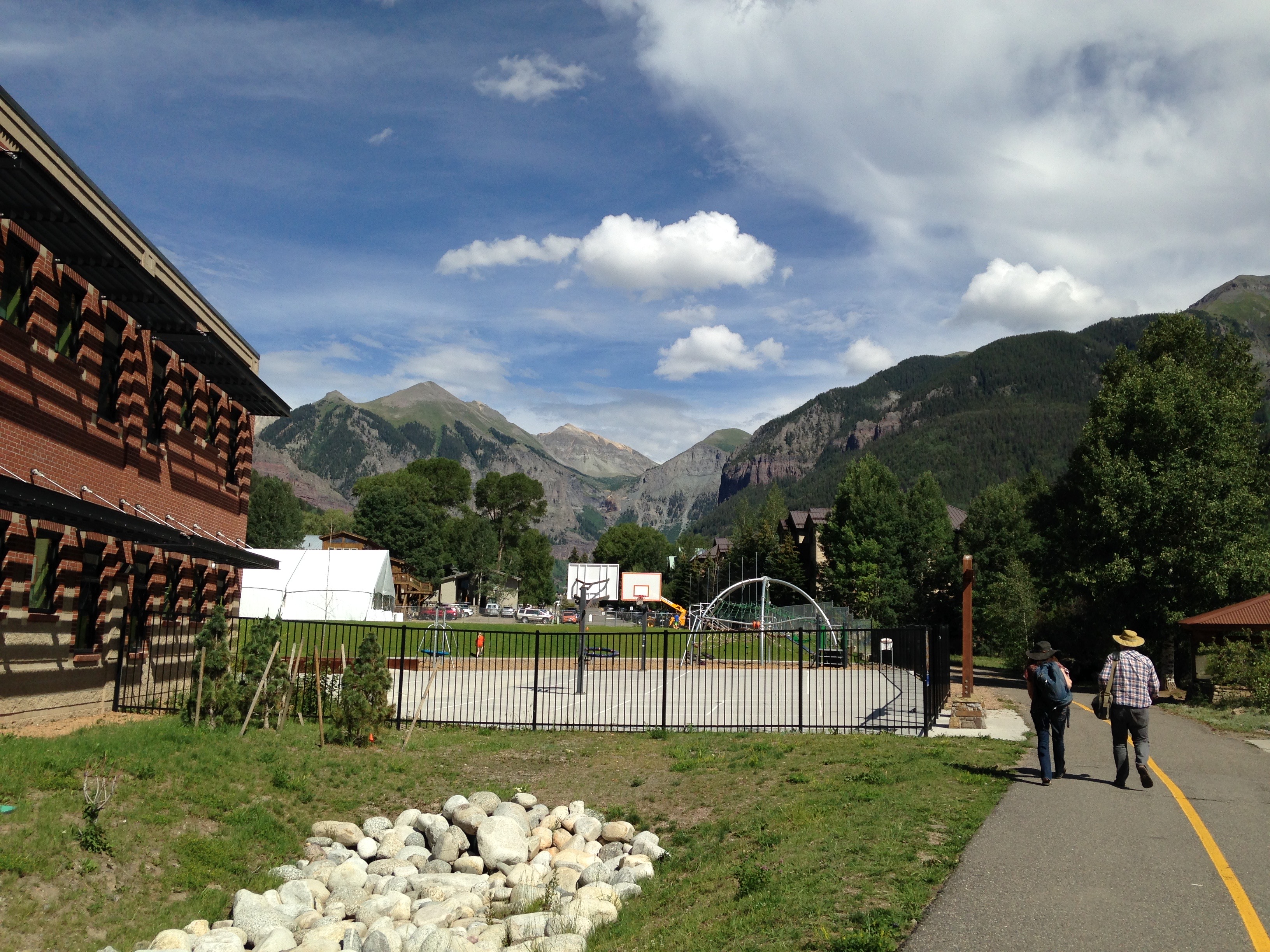Over the past two months, John has given two talks at national conferences. These talks have summarized the group’s work using novel scanned probe microscope measurements to understand charge generation and recombination in lead-halide perovskites and organic semiconductors.
Telluride meeting
J. A. Marohn, “Studying the Puzzling Photoconductivity Dynamics of Lead-halide Perovskites With Scanning Impedance Microscopy”; Electronic and Structural Dynamics in Hybrid Perovskites: Theory Meets Experiment; Telluride, Colorado; July 17 – 21, 2018 [url].
The lesson of the first talk was two fold: (1) scanned probe microscopy measurements teach us something new about lead-halide perovskites (light leads to an increase in ionic conductivity, which lasts 10s to 100s of seconds after the light is removed) and (2) lead-halide perovskites teach us something new about scanned probe microscopy (describing the light-induced friction and frequency shifts observed over semiconductor films requires rethinking from first principles the interaction of a charge cantilever with a semiconductor film).
This conference, sponsored by the Telluride Science Research Center, was a small, intense meeting of experts. The conference was organized by Sergei Tretiak and Amanda Neukirch of the Los Alamos National Laboratory and Jacky Even of the Institut National des sciences Appliquées (INSA) de Rennes. The conference was held at an elementary school in the small town of Telluride, Colorado, in the Rocky Mountains. Here is a view from just outside the elementary school looking east towards downtown:

Nanoscientific conference
J. A. Marohn, “Advances in Electric Force Microscopy: (1) Sub-cycle Changes in Photocapacitance in Organic Photovoltaics, (2) Anomalous Light-induced Conductivity in Lead-Halide Perovskites, and (3) a Unified Lagrangian- Mechanics Theory of Scanning-Probe Electrical Measurements”; 2018 NanoScientific Symposium: Scanning Probe Microscopy (SPM); SUNY Polytechnic Institute; Albany, New York; September 19 – 20, 2018 [url].
The second talk introduced our new scanned-probe method for measuring transient conductivity in semiconductors with nanosecond resolution, summarized our perovskite findings, and introduced our new mathematical description of electrical scanned probe microscope experiments.
The conference was organized by Keibock Lee, President at Park Systems Incorporated. The conference sponsor, Park Systems, is a world-leading manufacturer of atomic force microscopy systems. The company was founded by Dr. Sang-Il Park, a member of Cal Quate’s group at Stanford University where the atomic force microscope was first developed.
This work presented in these talks was funded by the the U.S. National Science Foundation.